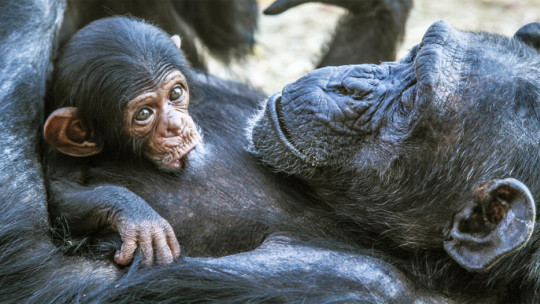
Give to others, help others without expecting anything in return. Although today it is not so common given that we are immersed in an increasingly individualistic culture, it is still possible to observe from time to time the existence of a large number of acts of spontaneous generosity and selfless help to others. And not just humans: altruistic acts have been observed in a large number of animals of species as different as chimpanzees, dogs, dolphins or bats.
The reason for this type of attitude has been the subject of debate and research from sciences such as psychology, ethology or biology, generating a large number of theories about altruism. It is about them that we will talk about throughout this article, highlighting some of the best known.
Altruism: basic definition
We understand altruism as that pattern of conduct or behavior characterized by the search for the well-being of others without expecting that it will generate any type of benefit for us, despite the fact that said action may even harm us. The well-being of others is therefore the element that motivates and guides the subject’s behavior, whether we are talking about a specific act or something stable over time.
Altruistic acts are generally well regarded socially and allow them to generate well-being in others, something that has a positive impact on the bond between individuals. However, at a biological level, altruism involves an action that in principle is not directly beneficial for survival and even that it can put them at risk or cause death, something that has made different researchers consider the reason for the emergence of this type of behavior.
Theories about altruism: two main points of view
Why a living being may be willing to sacrifice its life, cause harm, or simply use its own resources and efforts in one or several actions that they do not bring you any profit It has been the subject of extensive research from different disciplines, generating a large number of theories. Among all of them, we can highlight two large groups in which theories about altruism can be inserted.
Pseudo-altruistic theories
This type of theory about altruism is one of the most important and has had the greatest consideration throughout history. They are called pseudo-altruists since what they propose is that ultimately altruistic acts do pursue some type of personal benefit, even if it’s on an unconscious level.
This search would not be for a direct and tangible benefit from the action, but rather the motivation behind the altruistic act would be the obtaining of internal rewards such as self-approval, the feeling of doing something considered good by another or the following of one’s own moral code. Also the expectation of future favors would be included by the beings to whom we provide help.
Purely altruistic theories
This second group of theories considers that altruistic behavior is not due to the intention (conscious or not) of obtaining benefits, but rather that part of the direct intention to generate well-being for the other. It would be elements such as empathy or the search for justice that would motivate the action. These types of theories usually take into account how relatively utopian it is to find total altruism, but they value the existence of personality traits tending towards them.
Some of the main explanatory proposals
The previous two are the two main existing approaches regarding the functioning of altruism, but within both of them a large number of theories are included. Among them, some of the most notable are the following.
1. Reciprocal altruism
Theory that, from the pseudoaltruism approach, advocates that what really drives altruistic behavior is the expectation that the help provided will subsequently generate equivalent behavior in the person helped, in such a way that in the long run the chances of survival are enhanced in situations where one’s own resources may not be sufficient.
Likewise, whoever receives the help benefits from it at the same time tends to feel indebted to others. The possibility of interaction between both individuals is also enhanced and favored, something that favors socialization between unrelated subjects. You have the feeling of feeling indebted.
2. Normative theory
This theory is very similar to the previous one, with the exception that it considers that what moves the helper is the moral/ethical code or values, its structure and the feeling of obligation towards others derived from them. It is also considered a theory of the pseudoaltruism approach, given that what is sought by helping others is to obey the social norm and the expectations of a world together that have been acquired socioculturally, avoiding the guilt of not helping and obtaining the gratification of having done what we consider right (thus increasing our self-esteem).
3. Tension reduction theory
Also part of the pseudo-altruistic approach, this theory considers that the reason for helping others is to reduce the state of discomfort and agitation that the observation of another person’s suffering generates in us. The absence of action would generate guilt and increase the subject’s discomfort, while helping will reduce the discomfort felt by the altruistic subject himself by reducing that of the other.
4. Hamilton’s Kin Selection
Another existing theory is Hamilton’s, which considers that altruism is generated by the search for the perpetuation of genes. This theory of eminently biological load values that in nature many of the altruistic behaviors are directed towards members of our own family or with whom we have some type of blood relationship.
The act of altruism would allow our genes to survive and reproduce, even though our own survival could be harmed. It has been observed that a large part of altruistic behaviors are generated in different animal species.
5. Cost-benefit calculation model
This model considers the existence of a calculation between costs and benefits of both acting and not acting when carrying out an altruistic act, specifying the existence of fewer risks than possible benefits to be obtained. Observing another’s illness will generate tension in the observer, something that will cause the calculation process to be activated. The final decision will also be influenced by other factors, such as the degree of connection with the subject who needs help.
6. Autonomous altruism
A model more typical of the purely altruistic approach, this proposal assumes that it is the emotions that generate the altruistic act: the emotion towards the subject in trouble or towards the situation causes the basic principles of reinforcement and punishment to no longer be taken into account. This model, worked on by Karylowski among others, takes into account that for altruism to be truly such it is necessary that attention is focused on the other (If it were focused on oneself and the sensations it provokes, we would be looking at the product of normative theory: altruism for the fact of feeling good about oneself).
7. Empathy-altruism hypothesis
This hypothesis, by Bateson, also considers altruism as something pure and not biased by the intention to obtain any type of reward. The existence of various factors to be taken into account is assumed, the first step being being able to perceive the need for help from others, the differentiation between their present situation and what their well-being would imply, the salience of said need and the focus on the other. . This will generate the appearance of empathy, putting ourselves in the other’s place and experiencing emotions towards them.
This will motivate us to seek their well-being, calculating the best way to help the other person (something that could include leaving the help to others). Although help can generate some type of social or interpersonal reward, it It is not the objective of the aid itself.
8. Empathy and identification with the other
Another hypothesis that considers altruism as something pure proposes the fact that what generates altruistic behavior is identification with the other, in a context in which the other is perceived as needing help and through identification with him we forget the boundaries between the self and the person in need. This will end up causing us to seek their well-being, in the same way we would seek our own.








